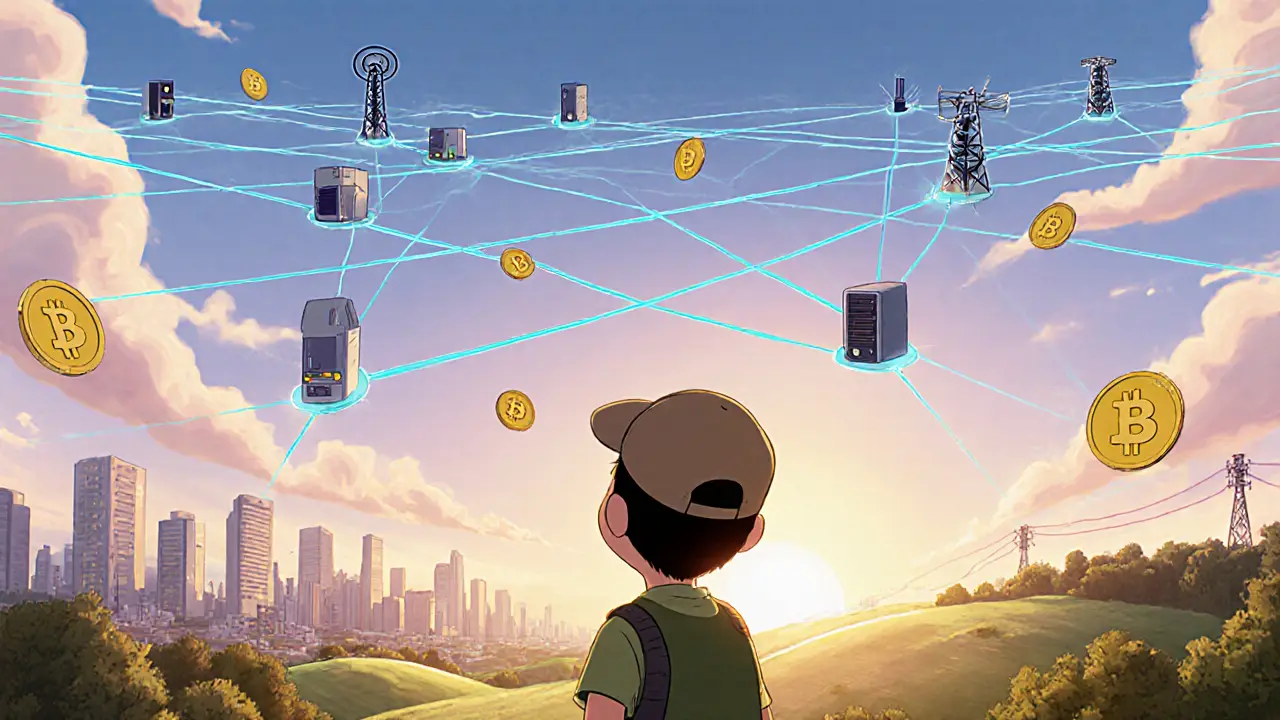Explore DePIN token economics, covering supply models, incentives, utility, market performance, risks, and a practical checklist for participants.
DePIN Token Economics: How Tokens Power Decentralized Infrastructure
When diving into DePIN token economics, the study of how token design drives decentralized physical infrastructure networks. Also known as Decentralized Physical Infrastructure Network economics, it blends finance, technology and real‑world asset management to keep the network running and growing.
This field sits at the intersection of several key concepts. Tokenomics, the structure of supply, distribution and utility behind a token defines how new coins are minted, who gets them and what they can do. Staking rewards, incentives paid to participants who lock up tokens to secure the network create a direct financial reason for operators to provide bandwidth, storage or sensor data. Finally, the utility token, the digital asset that grants access to services and governance ties everyday usage back to the token's value. Together these entities form a loop: tokenomics sets the rules, staking rewards encourage participation, and the utility token fuels demand.
Why Tokenomics Matters for Real‑World Assets
In a DePIN project, the token isn’t just a speculative asset – it’s the engine that funds hardware deployment, pays node operators and aligns incentives across a global crew. A well‑balanced supply curve (often capped at a fixed max) prevents inflation, while a strategic allocation (foundation, community, investors) ensures early backers and long‑term contributors coexist. For example, a 30% reserve for network rewards can sustain staking payouts for years, whereas a 10% community fund might support development grants and marketing pushes.
Staking rewards act as the economic glue. By locking up tokens, operators earn a share of transaction fees or newly minted coins, which directly correlates with the amount of physical capacity they provide. This reward‑for‑service model mirrors traditional utility billing but swaps fiat payments for transparent, on‑chain payouts. It also reduces attack vectors: the more stake tied up, the costlier it is for a bad actor to disrupt the network.
The utility token’s role goes beyond payment. It often doubles as a governance key, letting holders vote on protocol upgrades, fee structures or expansion plans. This democratic layer ensures the network adapts to market needs without a central authority. When users need to access storage, bandwidth or IoT data, they spend the token, creating real demand that supports its price.
All these pieces interact in predictable ways. DePIN token economics encompasses tokenomics, staking rewards and utility functions. Tokenomics requires clear incentive mechanisms. Staking rewards influence network security. Utility tokens enable both payment and governance. These semantic triples illustrate the cause‑and‑effect flow that makes a DePIN project viable.
Beyond the core trio, other related entities shape the economic landscape. Market liquidity determines how easily participants can buy or sell tokens without slippage. Fee models (fixed vs. variable) affect user adoption and operator earnings. Regulatory compliance, especially around securities laws, can dictate token distribution strategies. Understanding these peripheral factors helps you evaluate a project's long‑term sustainability.
In the collection below, you’ll find deep dives into token risk, NFT incentives, airdrop mechanics, consensus algorithms and more—all tied back to how tokens drive decentralized infrastructure. Whether you’re a node operator looking for optimal staking strategies, an investor assessing token supply models, or a developer planning a new DePIN launch, the articles provide practical insights you can act on right now.
Ready to explore the specifics? Scroll down to see detailed guides, real‑world case studies and actionable checklists that bring DePIN token economics to life.





